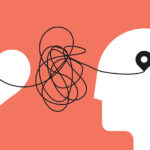The purpose of communication is to shorten the emotional distance between people.
Where people mess this up is when they think that empathy comes from the head, not from the heart. It’s not rationality we’re dealing with here.
When you say things like “I know how you feel” or “you don’t understand what I’m saying,” what are you trying to convince me of?
That you get me? That I’m missing something? That I lack intellect?
I’ll tell you what I think. When you say these things, you’re talking about you. Do I get you? So much for a true two-way street and some real engagement.
Communication is inviting people in, not kicking them out.
So, breathe.
Listen.
Better yet, say:
“Tell me how you feel.”
“I’m not sure I explained things clearly.”
See how the nature of the conversation moves from there.
A colleague recently explained to me the power of communication.
She shared one key to equality, diversity, and inclusion is to improve the quality of conversations by creating a shared sense of understanding.
Being heard, having diverse perspectives, and having a say. How powerful. We need to make a big deal about this. A really big deal.
Watch an effective leader in action.
They assume nothing about the person or people with whom they are talking to. They listen and engage. Ask questions. Clarify as best they can. Listen some more. Doesn’t matter if it’s a meeting or a major company announcement.
Every conversation is a chance to connect.
Check out the podcast episode:
Common Leadership Communication Mistakes: Episode 2 – No news is bad news and you don’t know how I feel.
In this episode we discuss the importance of ongoing communication and why ” I know how you feel” makes people nuts. Ladderburners, unite!
Apple Podcasts | Spotify | Google Podcasts
For more on this topic and other common communication mistakes, listen to the Leadership Communication Podcast Series with Alan Patterson and Kelly Norton on Ladderburners Unite!, available wherever you listen to podcasts.
- Trust: Is it a Head or Heart Thing?
 23 min. read Nobody argues with the importance of trust, but yet we never really spend the time needed to break it down to better understand it
23 min. read Nobody argues with the importance of trust, but yet we never really spend the time needed to break it down to better understand it - Learning Lab: Waiting to Feel Worthy? Knock it off.
 3 min. read You’re not alone in feeling this way – especially when it comes to career moves.
3 min. read You’re not alone in feeling this way – especially when it comes to career moves. - Learning Lab: Who is someone you’d really like to know better?
 3 min. read There are opportunities EVERYWHERE for unexpected connection and relationship building.
3 min. read There are opportunities EVERYWHERE for unexpected connection and relationship building.
